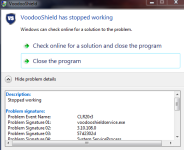H
hjlbx
Yes and Yes, like I said before you exploit the confusing alertsIt's like any other security product (you don't even know what you install or what you allow).
Once you allow something, that is a bypass.
A user mistake or social engineering is not considered a bypass in the technical sense.
Technically, a bypass is when malware can defeat a security soft's protections without requiring user decision making. For example, when the user navigates a browser to a malicious URL that successfully exploits the browser and obtains escalation of privilege.
Your meaning of the term "bypass" is different than that established and acknowledged by the security soft industry. Yes, it is a form of bypass, but not one that
counts against the soft protections. Improperly used software - which includes unknowledgeable use that leads to mistakes - is not a technical bypass.
